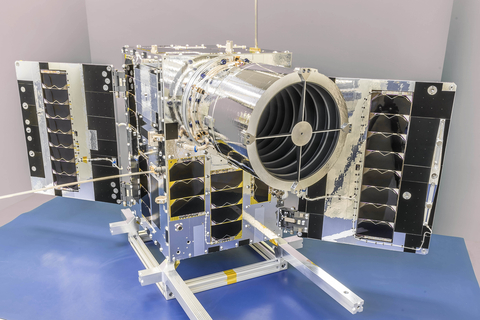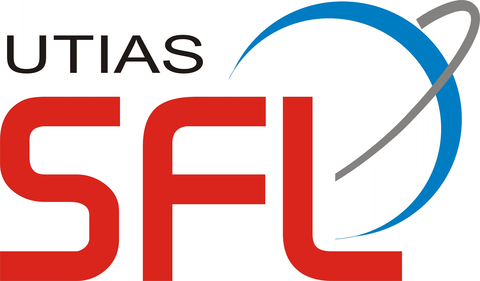Space Flight Laboratory (SFL) Announces Launch and Deployment of NorSat-4 Maritime Monitoring Microsatellite
Space Flight Laboratory (SFL) Announces Launch and Deployment of NorSat-4 Maritime Monitoring Microsatellite
Seventh Satellite Developed by SFL for Norway
TORONTO--(BUSINESS WIRE)--Space Flight Laboratory (SFL) has confirmed the successful launch and deployment of Norway’s NorSat-4 maritime monitoring microsatellite. The seventh spacecraft developed for the Norwegian Space Agency (NOSA) by SFL, NorSat-4 carries a fifth-generation Automatic Identification System (AIS) ship tracking receiver and a first-of-its-kind low-light imaging camera.
Built on SFL’s space-proven 35-kg DEFIANT microsatellite bus, NorSat-4 launched from Vandenberg Space Force Base in California aboard the SpaceX Transporter-12 rideshare mission on January 14. Ground control has confirmed communication with the spacecraft. The Norwegian satellite launched on the same SpaceX rideshare as the three-microsatellite Gray Jay Arctic surveillance demonstration mission developed by SFL for Defence Research and Development Canada (DRDC).
“NorSat-4 maintains Norway’s leadership in space-based maritime situational awareness with a cost-effective small satellite program,” said SFL Director Dr. Robert E. Zee. “The addition of the low-light imaging camera on this mission continues the NOSA tradition of testing cutting-edge onboard technology.”
The low-light optical camera expands the Norwegian Coastal Administration’s ability to detect and track vessels in its Arctic territorial waters by supplementing the AIS receiver aboard the satellite. Some ships at sea deactivate their AIS transmitters or spoof the signals with incorrect location/identity data for nefarious reasons. Safran Reosc of France built the camera under contract with the Norwegian Defence Research Establishment to optically detect vessels longer than 30 meters in Arctic darkness.
The camera is a demanding payload because it requires active thermal control to maintain low-light image quality and also needs extremely precise attitude control for accurate image geolocation. Additionally, SFL designed and manufactured a very compact mechanical iris shutter for the camera aperture, protecting the device from direct sun exposure in orbit.
SFL has a long history of supporting Norway’s leadership in space-based maritime traffic monitoring beginning with the 7-kg AISSat-1 nanosatellite in 2010. This mission proved that AIS signals could be detected from space. The AISSat-2 nanosatellite followed in 2014. AISSat-1 and -2 far exceeded their design expectations, operating for 12 and nine years, respectively.
Norway expanded its small satellite program to include a series of larger satellites named “NorSat” to accommodate larger instruments and more elaborate missions, launching NorSat-1 and -2 in 2017 and NorSat-3 in 2021. Each carried successively improved AIS receivers developed by Kongsberg Seatex along with experimental payloads. Among the most important technological successes achieved during this period was a foldable high-gain VHF Yagi antenna, designed and built by SFL, that could be deployed in orbit after launch.
Another standout mission for NOSA and SFL has been the NorSat-TD (Technology Demonsration) microsatellite launched in April 2023. In addition to its primary mission of AIS ship tracking, NorSat-TD carries multiple experimental payloads including a laser communications device called SmallCAT. This Dutch-built instrument was among the first ever to transfer data from a microsatellite to a ground station by optical link. This accomplishment was made possible by precise attitude control and fine steering technology developed and refined by SFL for low-mass spacecraft.
Established in 1998, SFL has developed 86 operationally successful smaller satellite missions totaling more than 360 cumulative years in orbit. Another 21 missions are now under development by SFL, which offers a complete suite of nano-, micro- and small satellites – including high-performance, low-cost CubeSats – that satisfy the needs of a broad range of mission types from 3 to 500 kilograms. For a comprehensive list of SFL high-performance satellite platforms, please visit https://www.utias-sfl.net/satellite-platforms/overview/.
About Space Flight Laboratory (SFL) (www.utias-sfl.net)
SFL generates bigger returns from smaller, lower cost satellites. Small satellites built by SFL consistently push the performance envelope and disrupt the traditional cost paradigm. We build quality small satellites at low cost that work the first time and enable NewSpace companies to mass produce through our Flex Production program. Satellites are built with advanced power systems, stringent attitude control and high-volume data capacity that are striking relative to the budget. SFL arranges launches globally and maintains a mission control center accessing ground stations worldwide. The pioneering and barrier-breaking work of SFL is a key enabler to tomorrow’s cost-aggressive satellites and constellations.
(www.utias-sfl.net)
Contacts
Dr. Robert E. Zee
SFL Director
1-416-667-7400
info@utias-sfl.net
Follow SFL
Twitter X @SFL_SmallerSats
Instagram at sfl.smallersats

